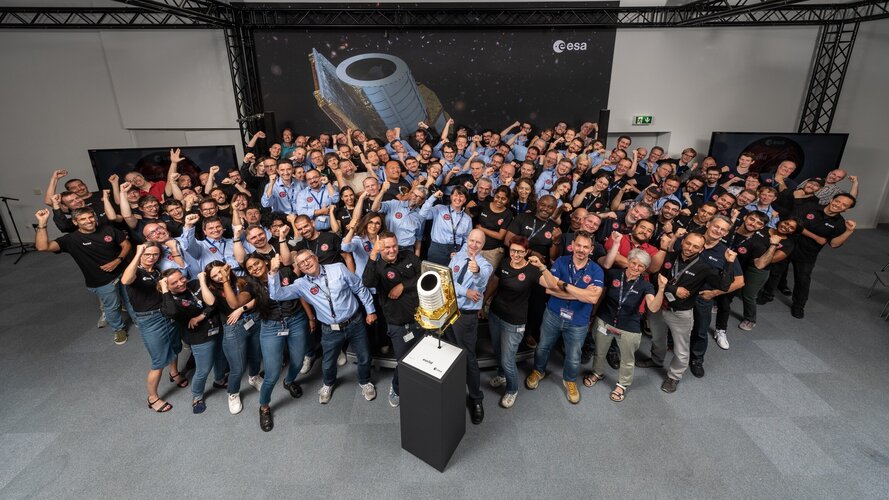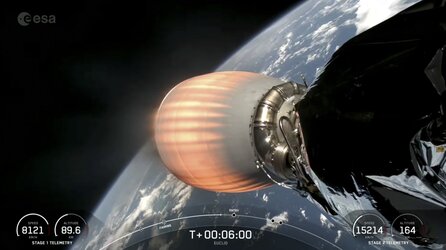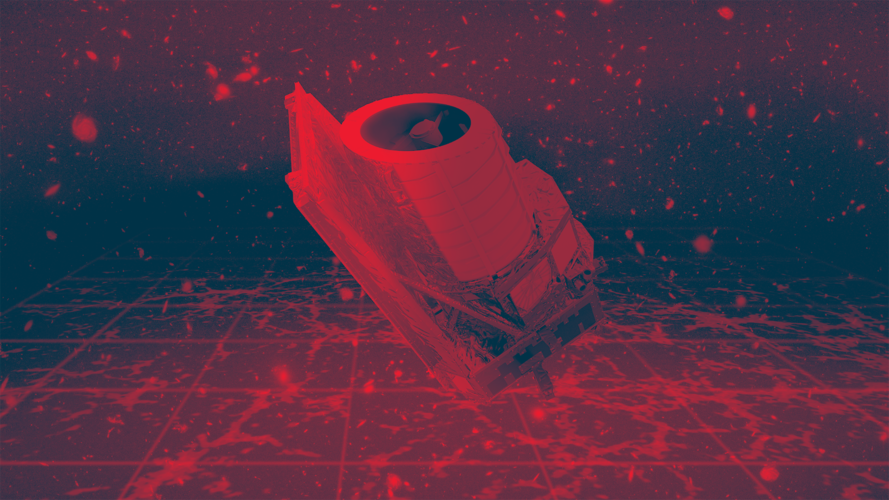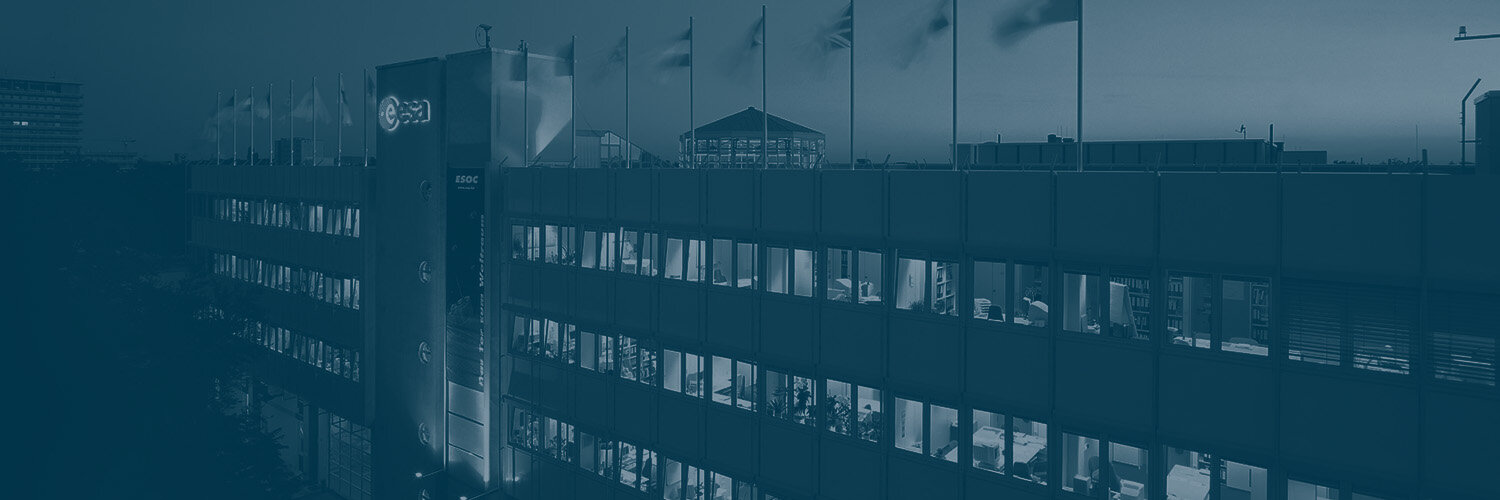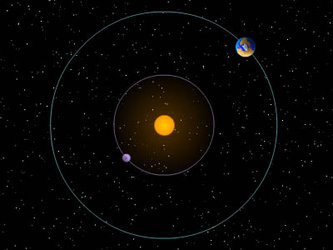Euclid’s large halo around indefinitely small point
In brief
If you think it's only possible to be held in orbit around a physical 'thing' with a large mass – a planet or a star, say – you'd be wrong. It is in fact possible to orbit around an invisible point, an oasis of forces, infinitesimal in size. ESA’s Euclid mission was launched on 1 July 2023 to uncover the secrets of the dark universe. Its destination? Like many astronomy missions before it, Lagrange point 2.
In-depth

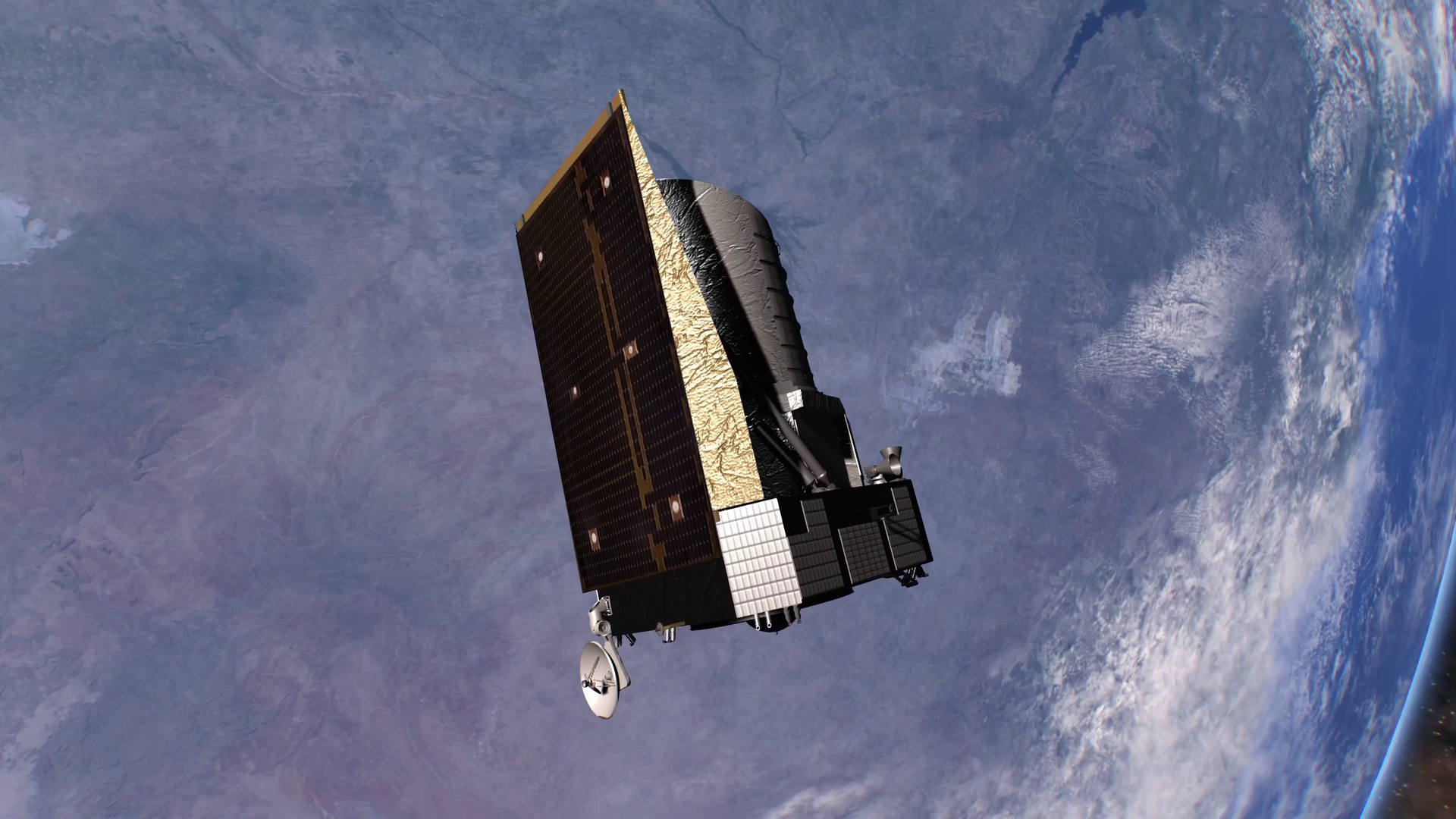
Access the video
This animation, created using “Gaia Sky”, shows Euclid’s path from Earth to this unique and useful position in space. Located about 1.5 million kilometres from Earth in the opposite direction from the Sun, the second Lagrange point (or Libration point) is about four times further away than our Moon.
Euclid will spend about a month getting to ‘L2’ followed by a planned six years in orbit, from where it will study the mysterious nature of dark matter and dark energy that make up 95% of our Universe, but about which very little is known.
What are Lagrange points?
Lagrange point 2 is one of five Lagrange points located in fixed positions around the Sun and Earth. Truly points, they are themselves invisible, infinitesimal in size, and created where the gravitational pull of two large bodies creates a ‘centripetal force’ that enables a body in these locations to rotate with them.

This balancing out of ‘push’ and ‘pull’ forces results in five gravitational oases in the vicinity of any two massive moving bodies. As such, satellites in orbit around Lagrange points require much less work, and fuel, to remain in place here.

In an ideal world, spacecraft would remain in orbit here forever, without any help at all. However, like resting a pencil on your finger, the reality is a little different. Mathematically, both should be easy, but just as the wobble caused by a person breathing can cause the pencil to topple, unpredictable factors in space mean that spacecraft too can begin to wander.
One primary factor is the ‘breathing’ of our Sun. Solar Radiation Pressure – literally the small force exerted on objects by light photons – is unpredictable but has a real effect. Every four weeks, a small manoeuvre will be commanded by controllers on the ground at ESA’s mission control centre in Germany, to maintain Euclid’s orbit.
Why ‘L2’?
The second Lagrange point is ideal for astronomy missions because they can keep the Sun, Earth and Moon behind them at all times, so they don’t interfere with observations, while at the same time getting a clear view of deep space and pointing an antenna back to Earth to remain in close communication.

The permanent sunlight on Euclid at L2 also keeps the telescope thermally stable, allowing for the extremely high stability required for the instrument’s long exposure observations.
Euclid’s orbit around Lagrange point 2 is big, bigger than the Moon’s path around the Earth. In fact, by the time Euclid has completed one full revolution around L2, the Moon will have circled the Earth six times. In terms of distance, the ‘radius’ of Euclid’s orbit varies from about 400 000 kilometres at its closest to the centre, and up to 800 000 kilometres at its furthest.
The reason for this large orbit is that it is almost free, in terms of fuel, to get there. The better the accuracy of the rocket that launches a mission into such a large halo orbit around L2, the less fuel that’s needed to perform correction manoeuvres – and Euclid only required a tiny correction manoeuvre after its launch on a Space X Falcon 9.
How will Euclid’s mission end?
Despite its distance, the second Lagrange point is considered an Earth orbit. As such, missions here are bound by international regulations on the sustainable use of space.

ESA, also in line with its own Zero Debris commitment, has designed a disposal manoeuvre so that once Euclid’s mission is over, it will be directed into heliocentric orbit – the same orbit as Earth’s around the Sun. For at least 100 years, the probability of Euclid entering back into the Earth-Moon system will be very, very small. By then, it may be possible to make use of such valuable metals in space!
Euclid will be ESA’s fifth mission at Lagrange point 2. Joining the Gaia observatory and NASA/ESA James Webb Space Telescope, it also follows in the orbits of Herschel and Planck, to shed light on the mysteries of our Universe.
Gaia Sky is a real-time, 3D, astronomy visualisation software that runs on Windows, Linux and macOS. It is developed in the framework of ESA's Gaia mission to chart about 1 billion stars of our Galaxy in the Gaia group of the Astronomisches Rechen-Institut (ZAH, Universität Heidelberg).














 Germany
Germany
 Austria
Austria
 Belgium
Belgium
 Denmark
Denmark
 Spain
Spain
 Estonia
Estonia
 Finland
Finland
 France
France
 Greece
Greece
 Hungary
Hungary
 Ireland
Ireland
 Italy
Italy
 Luxembourg
Luxembourg
 Norway
Norway
 The Netherlands
The Netherlands
 Poland
Poland
 Portugal
Portugal
 Czechia
Czechia
 Romania
Romania
 United Kingdom
United Kingdom
 Slovenia
Slovenia
 Sweden
Sweden
 Switzerland
Switzerland


























